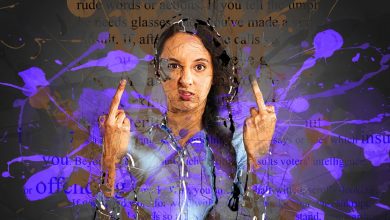Emotional intelligence – basics
When working holistically with groups, professional trainers often are using emotions as a powerful catalyst. Putting layers of emotions into the educational process, a very interesting and fruitful process. However it requires a certain level of emotional intelligence (EI) by the trainer him/her self. Being aware of your own emotions during working with groups is enriching, but challenging process.

Why did I choose this tool?
This tool will help you understand the basic components of emotional intelligence and guide you in practising required knowledge, skills and attitudes towards greater using of emotions within a training setting.
How does this apply to being a trainer?
Sharing my genuine emotions (as a trainer) with a group of learners is a very powerful thing to do. In order to do it effectively, I have to be very much aware of my own emotions, where they are coming from and how to use them in an educational manner.
I strongly recommend to practise bringing emotions to learning processes – your own emotions as a trainer and being curious to explore the various emotions of the participants. Learn from this irrational level. In my opinion – this element makes a difference between a “toolbox trainer” (method, method and another method) and a professional trainer, who is able to create an educational experience from situations “here and now”.
Main content:
Explore these proposed videos:
1.Daniel Goleman introduces emotional intelligence:
2. “6 Steps to Improve Your Emotional Intelligence | Ramona Hacker | TEDxTUM”
You can start this one from 8 min 40sec., the essence starts from there.
Six steps for your improvement of your EI :
1. Acknowledge emotions as something valuable. Talk about emotions. Ask people with genuine interest – how they are feeling. When you are asked – answer with authenticity. And make it an I-message (“I feel this”, not “we all feel this”). Practise this in a training context, share your emotions from ’’ I’’ perspective. Be authentic and honest.
2. Differentiate and analyze emotions. Different emotions might also need you to handle them differently.
3. Accept and appreciate emotions. As a trainer you don’t have a role to make every participant happy (even if there are trainers who believe in such a mission). Effective learning (especially on the level of values) mostly is accompanied with not so easy to feel emotions (frustration, anxiety, perplexion, stress, anger), dealing with such emotions is not easy, but needed. As trainers, we don’t have a role to “heal” participants, make them feel better. We have to help them understand their emotions, accept them and help participants to channel them in a constructive way, learn from various emotional states.
4. Reflect on your emotions and their origin. Sometimes just knowing why you feel the way you do, already helps to handle the feeling. Each emotion we get is coming from our fulfilled or unfulfilled needs. For example: We have a team meeting, I try to express my opinion and it’s not easy to do so, because other team members are not listening to me. My need to be heard and listened to is not fulfilled, I am starting to feel angry or sad, or stressed, or… If I am being listened to and heard I get a feeling of acceptance, joy, happiness and so on…
Naming your emotion and searching, where it comes from is a very useful process, which allows us to react more constructively.
5. Handle your emotions. There isn’t one, the best way to handle emotions – you need to find what works for you.
1) One way of doing these steps, is by writing your emotions down in a journal, actively thinking about them. Writing down your emotions also puts distance between you and your emotions. “Opening up by writing it down by Pennebaker and Smith” (a referred book).
2) Reading on the topic is also helpful. Like all the books by Brene Brown.
3) Talk to friends, participants and ask them how they approach different situations and how do they feel.
6. Handle the emotions of others
1) You are getting better at this practicing and getting better at the first 5 steps.
2) You can also simply ask people how you can support them because they might know. Or you can ask them how they can support themselves. This way you will help them develop their emotional intelligence.
Reflection questions:
How open are you to share your genuine emotions with a group of learners? Rate yourself from 1 (min) to 10 (max). Why is it like this? Have a dialogue, discussion with a fellow trainer about this.
How can educational processes you organize be improved if you bring more work in on an emotional level?





